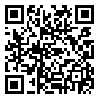Volume 14, Issue 3 (2011)
mjms 2011, 14(3): 35-42 |
Back to browse issues page
Download citation:
BibTeX | RIS | EndNote | Medlars | ProCite | Reference Manager | RefWorks
Send citation to:



BibTeX | RIS | EndNote | Medlars | ProCite | Reference Manager | RefWorks
Send citation to:
Dorfeshan P, Salehnia M, Moazzeni S M. The effect of ovulation induction on the distribution of uterus Natural Killer T (NKT) cell population at seventh day of mouse pregnancy. mjms 2011; 14 (3) :35-42
URL: http://mjms.modares.ac.ir/article-30-12321-en.html
URL: http://mjms.modares.ac.ir/article-30-12321-en.html
1- M.Sc., Department of Anatomical Science, Faculty of Medical Science, Tarbiat Modares University, Tehran, Iran
2- Professor, Department of Anatomical Science, Faculty of Medical Science, Tarbiat Modares University, Tehran, Iran
3- Professor, Department of Immunology, Faculty of Medical Science, Tarbiat Modares University, Tehran, Iran
2- Professor, Department of Anatomical Science, Faculty of Medical Science, Tarbiat Modares University, Tehran, Iran
3- Professor, Department of Immunology, Faculty of Medical Science, Tarbiat Modares University, Tehran, Iran
Abstract: (5181 Views)
Objective: The aim of this study was to evaluate and compare the population of Natural killer T lymphocyte (NKT) in the uterus and spleen of the hyperstimulated and control mice at the seventh day of pregnancy.
Materials and Methods: The superovulated and control mice were put individually in a cage with a male mouse. In the next morning they were considered for observing the vaginal plag. The day was assumed as the first day of pregnancy. On the 7th day of pregnancy, the samples were collected from uterus of implantation site, interval site and spleen tissues and 5 micrometer cryosections were prepared. The immunohistochemical reaction was used for CD 161 and CD3 markers and the distribution of NKT cells population were compared with nucleated cells in hyperstimulated and control groups.
Results: There were not significant differences between the NKT cell population of the spleen, decidual and myometrial tissue of interval site in the control and hyperstimulated groups. But this population was increased in the hyperstimulated group (2.26 ± 1.43) compared with control (0.79 ± 0.17; P≤0.05) in the decidual of implantation site, moreover there was not any significant difference at myometrial tissue of both groups in implantation site.
Conclusion: It seems that ovulation induction could not affect systematically on the population of NKT cells of pregnant mice while it could locally cause an increase in the decidual NKT cells.
Article Type: Original Manuscipt |
Subject:
Immunology|Anatomy
Received: 2011/04/9 | Accepted: 2011/07/12
Received: 2011/04/9 | Accepted: 2011/07/12
| Rights and permissions | |
 |
This work is licensed under a Creative Commons Attribution-NonCommercial 4.0 International License. |







